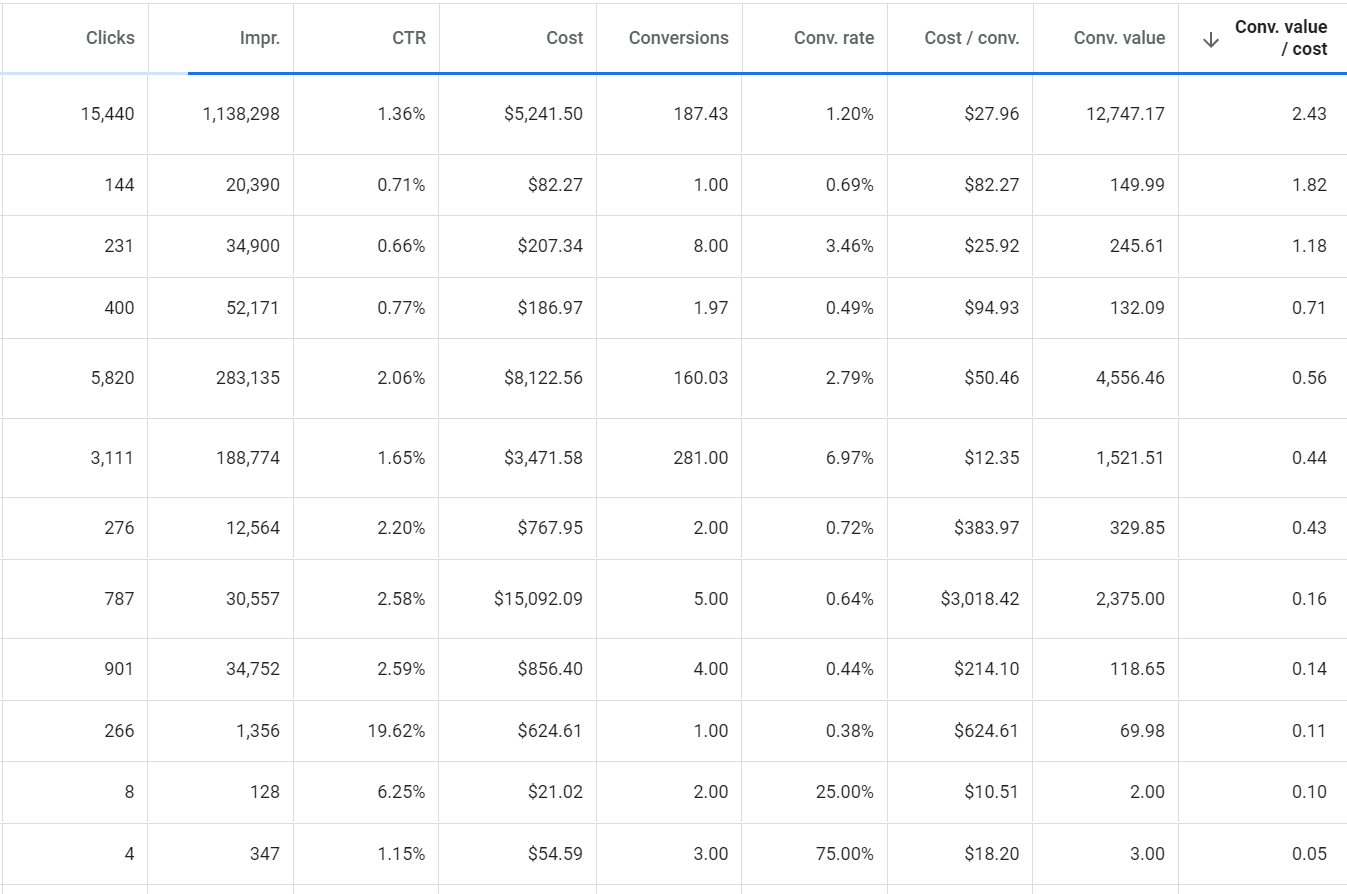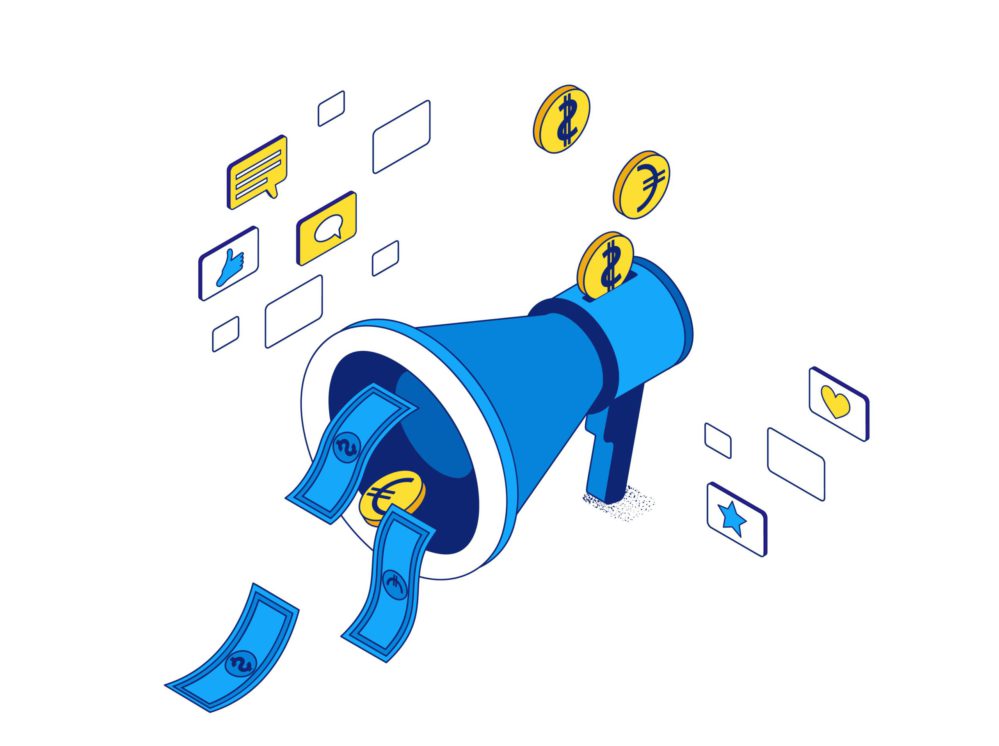What is Return on Ad Spend – ROAS?
ROAS stands for Return On Ad Spend. This metric is also known as R.O.I. whereas ROI refers to marketing in general, or any other investment like real estate, RoAS is a specific metric for digital Ad Spend. It is an important – perhaps the most important – key performance indicator for digital marketing campaigns. Unlike CPA (Cost per Acquisition or cost per conversion), ROAS takes into account the actual revenue generated from a marketing channel/campaign/ad group/ad/keyword. For example, let’s take a look at a campaign with a $1000 spend. Measuring the campaign’s performance, we see the campaign has generated $5000 in revenue.
| 5000/1000=$5 ROAS | Revenue/Spend = ROAS |
|---|
| Business 1 | Business 2 | |
|---|---|---|
| Cost | $1,000 | $1,000 |
| Acquisitions | 10 | 1 |
| Cost per Acquisition (CPA) | $100 | $1,000 |
| Revenue | $500 | $10,000 |
| RoAS | 0.5 | 10 |
How to Calculate ROAS within Google Ads
RoAS can be easily calculated within Google Ads down to the keyword & ad levels by using the “Conversion Value” parameter. Both the Google Ads & the Google Analytics website tags are capable of dynamically capturing and sending the conversion value along with other click & conversion data. Most modern eCommerce platforms have streamlined this process to automatically update checkout carts totals and send over the data back to Google. Depending on how your eCommerce website is built this may require some development but is usually very simple. Read more about tracking conversions with “Conversion Value” here.
With lead generation campaigns evaluating this metric could be achieved by using 3rd party solutions, like modern CRMs, or by using a manual, flat approach. An automated approach would include a modern CRM recording the original click data (especially the GCLID – Google click ID) once a prospect is created. When the sale is complete down the line, it may be associated with the original click that generated the original lead. Alternatively, a manual, flat approach would be evaluating the complete sales funnel – “all things considered” – and come up with a profound estimate as to generated revenue. I.e In the attorney example above, the lead closing avg. is %50 – meaning 1 of every 2 leads are closed to a $10,000 deal. In this calculation, you may attach a flat $5,000 “Conversion Value” to every lead conversion.

How too Use the RoAS Metric
Evaluating ROAS will help you determine which campaigns & ad groups are generating the best value for your budget. It will also easily reveal which ones require some optimizations along the funnel. Analyzing RoAS instead or along with CPA, will give you the one of the most accurate indicators about your digital campaign’s performance. If the measurements are correct, you should be able to view in a glance which campaigns are performing well and which ones are up for optimization.
Needless to say, using Google Ads’ latest A.I. bidding options, in combination with RoAS data is another step towards data-based full bidding automation. Setting up a target ROAS as your campaign goal will harness Google’s algorithms to automatically optimize your bid adjustments in order to bring in the best possible RoAS for your business.
How Does Click Fraud Affect your ROAS
Unfortunately, PPC click fraud activity directly affects your RoAS, and therefore your campaign profitability. Obviously, directing funds towards fraudulent clicks that will never convert hurts the business and the marketing campaign twice: on one hand, the business loses direct funds completely wasted in PPC bills. Secondly, real converting users are more likely to be served with competitor’s ads and reach a competitor’s website causing the loss of potential revenue. Therefore, the most important metric in testing a click fraud protection software is the improvement in RoAS over time with and without the software.
Clixtell, the world’s best click fraud solution, is designed to boost your RoAS. We’ve designed the system to build a dynamic IP blacklist, constantly synced to your Google Ads campaign’s IP exclusion list. This prevents fraudsters, hackers, bots & scripts from seeing and clicking your ads, wasting your PPC budget. Clixtell’s active protection will pay for itself twice: once by saving your business/client all of that wasted click fraud money, and twice by conveying more REAL clients to your website, generating more real customers for your business.



